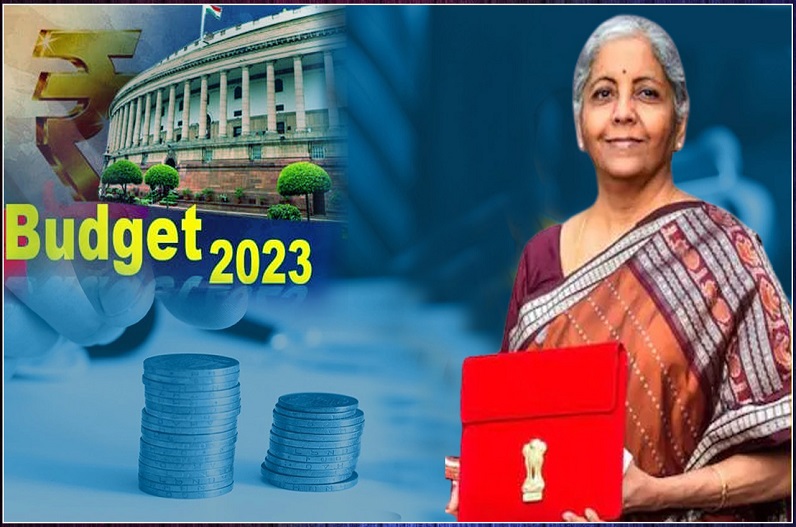To be targeted for Swarnim Bharat in 2047 is well received and convey the confidence of the politicians in power with no opposition to Needonomics School of Thought with commitment
 Dr. M. M. Goel
Dr. M. M. Goel

A close perusal of the proposals in the union budget 2023-24 of the size of Rs 4503097 crore by Finance Minister (FM) Ms Nirmala Sitaraman in her 5th speech of 58 pages spoken in 86 minutes reveals that the measures taken in the budget proposals were necessary but not sufficient for the economy of Sawrnim Bharat towards 2047.
It should have given energy and enthusiasm to all the stakeholders in tune with the seven priorities as the ‘Saptarishi’ guiding us through the Amrit Kaal-Inclusive Development, Reaching the Last Mile, Infrastructure and Investment Unleashing the Potential, Green Growth, Youth Power, Financial Sector Immunity booster for the health sector. It is pertinent to mention that the task of pleasing all the stakeholders is difficult if not impossible in a democratic nation. There are resource constraints faced by the Indian Government.

e-mail: infocom.krc@gmail.com
Know More | Apply Here
To become blessed, fortunate and lucky in 2047 to be Swarnim Bharat, we have started preparations for opportunities with our strengths and challenges. We understand our weaknesses too in terms of the population with unemployment, under-employment and poverty. Three features including smart economics, confident politics and credible fiscal numbers as claimed in an editorial of TOI are to be understood, analysed and interpreted by the stakeholders in right perspectives.
It has to be noted that budget is more than a statement of expenditure and receipts for the next year 2023-24 as an insight of the philosophy of the government of the day on economic issues with outlook on long run (25 years) with target of Swarnim Bharat in 2047. Long run may be a misleading guide to current economic affairs as J.M. Keynes once said “In long-run we may all be dead”. Sadly opposition is politically incapable to raise issues on supply side vision (ignoring demand side) to revamp Indian economy.
To sustain the momentum of infrastructural development, we must lay the foundations for job-led growth in the shock proof economy but needed PPP model in letter and spirit.
To be targeted for Swarnim Bharat in 2047 is well received and convey the confidence of the politicians in power with no opposition to Needonomics School of Thought with commitment.
The measures for protection from uncertainties in future calls for needo-education of the stakeholders including consumers, producers, distributors, traders and politicians in power and opposition. The observed shift from welfare spending to investment is welcome step but we have to ensure proper monitoring based on the canons of public expenditure by Dr. B.R. Ambedkar in terms of faithfulness, wisdom and economy in execution. The little decline in subsidy allocations is a welcome step in the right direction.
The intent of taking firm steps for achieving a fiscal deficit (FD) of Rs 1786816 crore (5.9 per cent) in 2023-24 to reduce to 4.5 per cent of GDP by 2026 are missing and lost in over enthusiasm and challenges. ‘More Returns’ from ‘Less Expenditure’ with a cost-effective approach needed to reap from today’s investment for tomorrow.
There was little manoeuvring space for total expenditure as 2/3rd of 100 is spent on debt servicing, defence, transfer to States, subsidies and pensions. By adding salary cost it becomes 3/4th of the budget. The total budget size of Rs 4503097 crore in 2023-24 conveys an exercise to allocate relatively small 25 percent of that. Borrowings were to be better monitored.
Capital expenditure enhancement conveys better quality expenditure for infrastructure. FRBM Act calls for moral-suavasive fiscal path. We were expecting big macro picture beyond the numbers. (interest payments, pensions, salaries, defense, grants to 28 States and 9 UTs).
To ensure implementation of NEP, the allocation for education is Rs 112898 lakh crore including Rs 44,094.62 crore for higher education. It should be noted that the Academic Bank Credit (ABC) of NEP 2020 can enhance students’ confidence index (SCI) and may reduce educational inequalities and justifies Capex in education for needo-education for needo-employability and needo-entrepreneurship.
The permission for world-class foreign universities is not in good taste but a confession that we are weak. The excessive stress on digitalization may have implications but calls for cyber laws to take care of the cybercrimes. FM must explain the use of education cess collected from the income taxpayers for effective implementation of NEP with many challenges including financing the States.
It is believed that sustainable growth in private consumption is needed for becoming $ 5 trillion Indian economy but the risks on high inflation may not be in good taste based on wrong methodology of measurement done every month.
There is a need for introspection on income and wealth inequalities as the world inequality report mentioned that inequalities in India are more than in many countries in the world.
To increase GDP we must have demand for goods and services by the people who have higher MPC (marginal propensity to consume). There is a strong case of redistribution of income and wealth. It is pertinent to mention that inequalities cause tension, discontent, corruption and crime. It leads to a decline in sense of belonging.
We should make honest efforts for justice, equality and unity in India which is possible only by redistribution of income and wealth through a concrete plan of action including tax reforms. The middle class is expected to be 47 percent by 2030 as consumers have a definite role to play and their disposable income stands enhanced by flexible tax slabs and reduction in surcharge rate are welcome step.
We have to create faith in the fundamentals of the Indian economy by adopting the user-pay principle so that the hopes of the stakeholders are not belied. Indian economy can be made consumer-friendly by adopting the NAW (Need, Affordability and Worth) approach of marketing with a focus on the need-based priorities in choices of all kinds. Atmanirbharta is a necessary and sufficient condition for sustainable development of an economy and its people by keeping a check on greed which is the villain for all of us.
For the vision of Swarnim Bharat, we must be committed as consumers, producers, distributors, traders and the entire government machinery as street SMART (simple, moral, action-oriented, responsive and transparent) Indian. We have to understand and adopt the principle of needonomics as a Swadeshi idea of Bharat in totality which includes needo-consumption, needo-saving, needo-production, needo-investment, needo-distribution, altruism, needo-trade for glocalization ( think globally and act locally), needo-environment and above all needo-insurance for needo-happiness Let us be ready for the next reforms in the Knowledge economy of Bharat.
We must understand the Needonomics School of Thought for Swarnim Bharat as knowledge economy to become world leader as Vishav Guru. We must remember that the goodness of the budget lies its implementation and effective use of the allocation which calls for faithfulness, wisdom of the professionals and economy in execution- the canons of public expenditure given by Dr B.R Ambedkar.
*The writer is Former Vice-Chancellor known as Founder Needonomics School of Thought and superannuated Professor of Kurukshetra University, Kurukshetra


